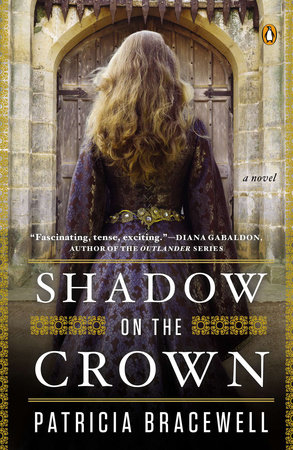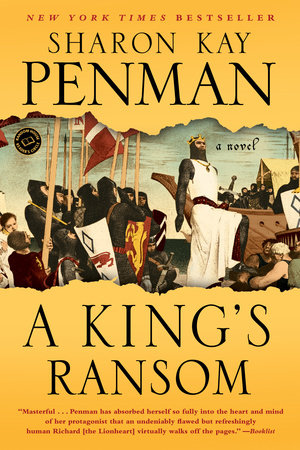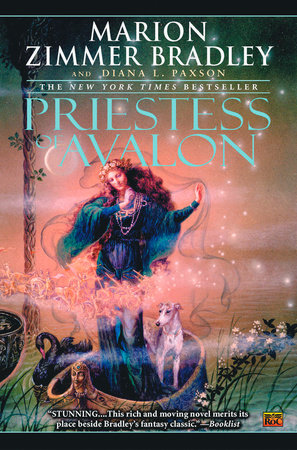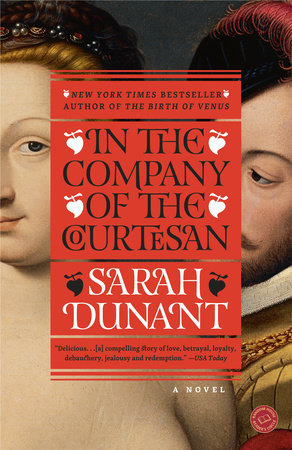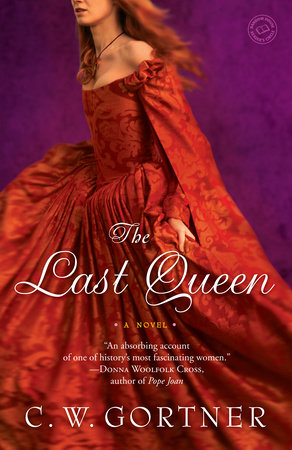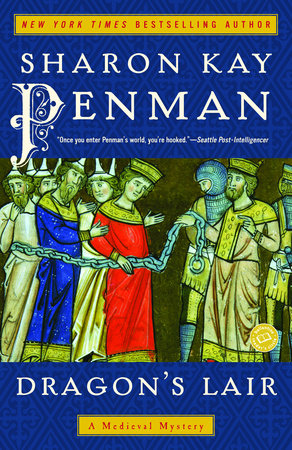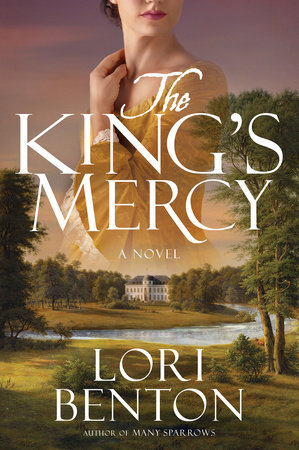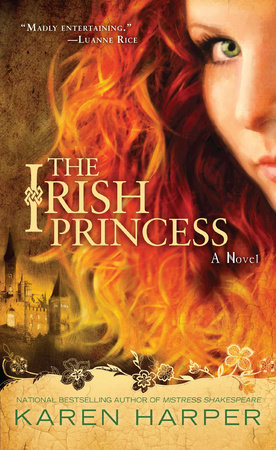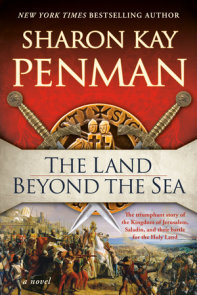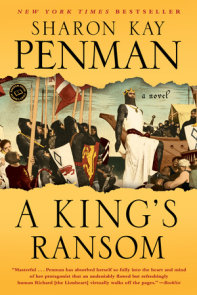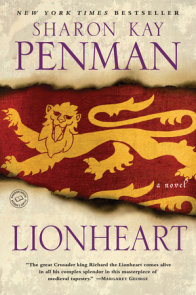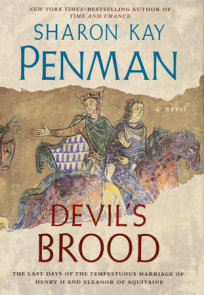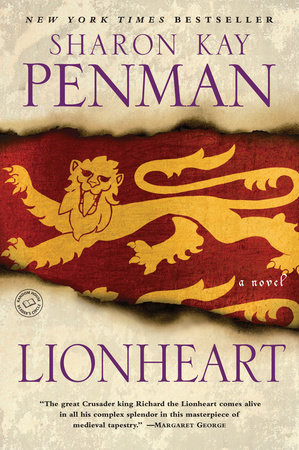Author Q&A
Author’s note
First of all, I want to address the queries of fans of The Lion in Winter, that classic film about the Devil’s Brood, with Henry and Eleanor memorably portrayed by Peter O’Toole and Katharine Hepburn. As I was writing this novel, I could hear their puzzled voices echoing in my ears. Then Henry did not take Alys as his concubine? And Richard was not gay? He did not have an affair with the French king?
I defer to none in my admiration for James Goldman; The Lion in Winter remains one of my all-time favorite films. But it came out in 1969, and what was accepted as gospel forty years ago is not necessarily true today. I have to confess that I was quite disappointed to conclude that Henry’s purported affair with Alys was a political calumny, for writers are irresistibly drawn to high drama, and what could be more dramatic than a man seducing his son’s betrothed? Oh my, the scenes I could have written…But once I’d researched the accusation, I realized that it would not withstand close scrutiny.
Sexual slander was as common a weapon in the Middle Ages as it is today. Henry was accused of lechery and adultery, Eleanor of incest and adultery, Richard of rape, and John of virtually every crime known to man.Many of the more unsavory stories involving Henry and Eleanor come from a very untrustworthy source, the man known as Giraldus Cambrensus or Gerald the Welshman, a Norman-Welsh cleric who has made brief appearances in both Time and Chance and Devil’s Brood as Gerald de Barri. Giraldus was a gifted and prolific writer, and his books about Wales are a treasure trove of information about medieval life. But Giraldus had a sharp axe to grind when it came to the Angevins; he bitterly blamed them for thwarting his ambition to become Bishop of St David’s. Most of Giraldus’s scandalous stories about Henry and Eleanor are better read as fiction; his literary career is aptly summed up by the eminent historian Hans Eberhard Mayer, who described Giraldus’s writings as “always delightful to read, but often hard to believe.”
Rumors of a liaison between Henry and Alys were mentioned by several English chroniclers, but there is no evidence to support them. I am not alone in reaching this conclusion. Dr.W. L.Warren, author of the definitive biography of Henry, did not find the story credible. Most of Henry’s biographers are skeptical of the charge, although Eleanor’s biographers are inclined to accept it. This is interesting but not surprising, for her biographers tend to become her partisans and Henry suffers accordingly. I plan to discuss this in greater detail on my website, but will confine myself here to pointing out the implausibility of these rumors. Henry would have had limited opportunities even to be with Alys, given his peripatetic lifestyle. Alys was at Winchester for a while and then apparently resided at the Tower of London with two other highborn heiresses, Isabella de Clare and Denise de Deols. Not even Giraldus suggests that Alys accompanied Henry on his unending excursions through his domains. But apart from the difficult logistics of it, such an action on Henry’s part would have been sheer insanity. And while Henry did not lack for flaws, he was always a pragmatist and never a fool.
Richard was able to benefit from these rumors, though. When the French king objected to his plan to wed Berengaria, the daughter of the King of Navarre, he expressed shock that Philippe could expect him to wed his father’s mistress. If Philippe had indeed made use of the gossip to try to worsen Richard’s precarious relationship with Henry, he was hoist with his own petard. All we can say for absolute certainty is that Alys was the true victim in these political machinations, a pawn caught up in a cold-blooded game of kings, treated very shabbily by Henry, Richard, and Philippe. When she was finally returned to France, Philippe married her off to the Count of Ponthieu, and we can only hope that she found some contentment in that union. Now . . . on to Richard. He and Philippe were never lovers. This notion stems from a patent misreading of medieval culture and custom. Richard’s sexuality was first questioned in the second half of the twentieth century, and this speculation can be traced in large measure to a passage in The Annals of Roger de Hoveden, who described Richard’s visit to the French court in 1187 as follows: “After peace was made, Richard, earl of Poitou, remained with the King of France, though much against the will of his father, and the King of France held him in such high esteem that every day they ate at the same table and from the same dish, and at night had not separate chambers. In consequence of this strong attachment which seemed to have arisen between them, the King of England was struck with great astonishment and wondered what it could mean, and taking precautions for the future, frequently sent messengers into France for the purpose of recalling his son Richard.”
To us, this clearly indicates a sexual relationship. But in the Middle Ages, sharing a bed did not have the same meaning that we would place on it today.Medieval people were accustomed to sharing beds, often with strangers.More to the point, this was an accepted means of bestowing honor and demonstrating royal favor. Throughout the Middle Ages, and beyond, kings used such ostentatious intimacy to flaunt political alliances and mend political fences; for example, Edward IV, surely the greatest womanizer ever to sit on the English throne, with the possible exception of Charles II, shared his chamber with the rebel Earl of Somerset to dramatize their reconciliation. And while our tabloids would go into meltdown mode in comparable circumstances, neither Philippe’s nor Edward’s subjects would have read something sexual in such familiarity.
So Richard was not the French king’s lover. But was he homosexual? In her insightful book Sexuality in Medieval Europe, Dr. Ruth Mazo Karras explores this challenging subject, setting forth the reasons why sexual mores in the Middle Ages cannot be easily compared to the beliefs of our more secular society. They saw sodomy as an act not an orientation, and they were unaware that sexual identity is biologically determined. We must bear this in mind when trying to answer questions about Richard’s sexuality.
What little we know of Richard’s sex life is as follows: He had an unhappy marriage, and an illegitimate son, and was accused of lechery in his lifetime; a chronicler writing in the thirteenth century reported that he’d scandalized his doctors on his deathbed by demanding that he be provided with women.We also know that he made a flamboyant and public confession of his sins in Messina, en route to the Holy Land, and that in 1195 he was accosted by a hermit who chastised him for his sinful ways, warning, “Be thou mindful of the destruction of Sodom, and abstain from what is unlawful, for if thou dost not, a vengeance worthy of God shall overtake thee.”According to Roger de Hoveden, Richard remained “intent upon the things of this world and not those which are of God,” not taking the warning seriously until he became gravely ill, after which “he was not ashamed to confess the guiltiness of his life, and after receiving absolution, took back his wife, whom for a long time he had not known, and putting away all illicit intercourse, he remained constant to his wife.”
This is all we know for certain. Anything else is conjecture.Was the hermit admonishing him for the sin of adultery or the sin of sodomy? John Gillingham, Richard’s preeminent biographer, contends that the Sodom warning does not refer to homosexuality, arguing that in the Middle Ages it referred to the terrible nature of the punishment, not the nature of the offense.Not every historian agrees with his interpretation, and so there is no academic consensus about Richard’s sex life. How could there be? He may have been heterosexual. He may have been bisexual. The only person who could answer the question with certainty has been dead for eight hundred years, and in any event, those were terms that would have been foreign to him.
Geoffrey has always been the son who interested me most, perhaps because he was the most enigmatic and the one most neglected by historians. Unfortunately for him, there were no Breton chroniclers writing during the years that he governed the duchy, and he was mentioned by English chroniclers only in passing, and always in connection with his rebellions against his father. Modern historians have tended to rely on Roger de Hoveden’s colorful quotation–that Geoffrey was a “son of perdition”– and on Giraldus Cambrensus’s condemnation of him as an eloquent dissembler, making no attempt to delve into the reasons for his rebellions. I have even seen his motives dismissed as mere “mindless malice,” and I always knew there was more to his story than that! He had to wait more than eight hundred years, but in 2000 a historian finally examined Geoffrey’s career in the context of his role as Duke of Brittany, giving us a much more nuanced and logical explanation for his actions.
The book is Brittany and the Angevins: Province and Empire, 1158—1203, by Judith A. Everard, and I recommend it highly for anyone interested in medieval Brittany. Dr. Everard demonstrates very convincingly that Geoffrey’s goal was to secure the full possession of his wife’s inheritance, the county of Nantes and the Honour of Richmond. Seen in that light, his actions make sense. And it can be argued that his conspiracy with the French king in the last months of his life may not be admirable, but it is understandable under the circumstances, for he saw the possession of Anjou as essential to protect his duchy against his hostile brother Richard.
Just as controversy swirled around Geoffrey during his lifetime, it followed him faithfully to the grave. Roger de Hoveden reported that he died of injuries received in a French tournament, while Philippe’s French clerk, Rigord, recorded that he died in Paris after enduring “a bed of suffering.” Until recently, it was accepted that Geoffrey died after being unhorsed in a tournament. But Dr. Everard argues that he really died of a fever, as reported by Rigord, and she postulates that the tournament was a “cover story” to explain his presence in Paris and to allay Henry’s suspicions.While I admire Dr. Everard’s work enormously, I did not find this argument persuasive. There was nothing secretive about Geoffrey’s presence in Paris; he issued his last charter there. And immediately after his death, Philippe claimed wardship of his daughters as his liege lord, thus revealing to Henry that his son had done homage to the French king. I could see the French king offering a false account of Geoffrey’s death, however, to avoid any difficulties with the Church over Geoffrey’s state funeral in Notre Dame cathedral, for men who died in tournaments were to be denied Christian burial. (Nor does it seem to me that there is an inherent conflict between Roger de Hoveden’s account and the one offered by Rigord. The English chronicler says Geoffrey was unhorsed and trampled after refusing to yield to his foes, and it is quite possible that he survived for hours or days. Rigord then focused on his actual death, rather than the circumstances of it, to spare his king any awkward conflict with the Bishop of Paris.) Very little is known of the circumstances of Eleanor’s capture, other than the fact that she was disguised as a man. We do not know when it occurred or where. Some historians place her flight in the spring of 1173, but I do not agree. She had too much pride to run, until there was no other choice. I am convinced that she did not leave Poitou until Henry’s army was driving into the heart of her duchy in November. The French historian Alfred Richard was the first to contend that she had been betrayed, having discovered the generous grants that Henry bestowed on four of her Poitevin barons. Since Henry went so far as to name Porteclie de Mauzé as Seneschal of Poitou in 1174, he seemed the most likely suspect to me. I set the ambush at Loches because of its proximity to Chinon, where she was apparently taken after her capture.
Roland de Dinan’s attack on Geoffrey’s castle at Rennes is often dated to 1182, which makes no sense, for Roland would not have acted on his own and Henry had no reason to launch such an assault at a time when he and Geoffrey were on good terms. But it is quite logical for the attack to have been made during the rebellion of 1183, as a means of drawing Geoffrey back to Brittany.
Only one significant fictional character has ever infiltrated my books–Ranulf Fitz Roy,Henry’s uncle in the trilogy.Henry I is known to have sired at least twenty illegitimate children, so what is one more? Otherwise, I prefer to use actual historical figures even in minor roles, such as the provost of Loches and the novice monk Jocelin of Brakelond. Often I have only a name to work with and must create a history on my own, as with Amaria. She is briefly mentioned in the Pipe Rolls, as when Henry paid for a gilt saddle with scarlet for Eleanor and a plainer one for Amaria, “her maid.” Obviously I often had to invent attendants, squires, and servants, although I was fortunate enough to find the actual household knights serving Henry, Hal, Richard, and Geoffrey. I arbitrarily picked the name Nicholas de Chauvigny for Eleanor’s loyal household knight, and was later delighted to discover that the de Chauvignys were stalwart supporters of the duchess and her son; I then made my fictional Nicholas kinsman to Richard’s real cousin André de Chauvigny.
Readers of my previous books know that I try not to tamper with established historical facts. I took a few liberties, but only those that kept my conscience clear: Hal’s presence at Henry’s Christmas Court in 1178; Eleanor’s presence at Woodstock in the summer of 1179. I indulged a whim and placed John of Salisbury on the scene when his friend the Bishop of Poitiers saved Hal’s hapless vice-chancellor,Adam de Churchedune, and since we don’t know who alerted the bishop to Adam’s peril, I gave that honor to Marguerite. I occasionally allowed my characters to receive news faster than their reallife counterparts. And I committed a minor sin of plagiarism, giving to Henry’s cousin Roger a sardonic assessment of the Archbishop of Canterbury when the acerbic judgment really came from the English chronicler William of Newburgh. It was simply too good not to use: “The man is laudably inoffensive, with the virtue of realizing his limitations.”
There is still so much that I want to share: the obvious cause of death for Hal and likely cause of death for Henry, personal details gleaned from the chronicles, discussion of the ways an individual’s death can alter the course of history, Eleanor’s age and Geoffrey’s actual date of death, my guidelines for creating medieval dialogue and the problems of writing of a bilingual society. But even I think a ten-page Author’s Note would be pushing the limits. So once Devil’s Brood is published, I will post some of these additional musings on my website, www.sharonkaypenman.com. Readers who do not have access to the Internet but who share my curiosity about the Angevins may write to me at PO Box 1134, Mays Landing, New Jersey 08330, and I will send you copies of the website material.
On the last page of the book, I could not resist having Eleanor comment that she and Henry would be remembered long after their deaths.Henry is judged to be one of England’s greatest kings, and Eleanor continues to bewitch and confound us just as surely as she bewitched and confounded her contemporaries. Even people with no interest in medieval history have heard of Richard Lionheart and Robin Hood’s nemesis, evil King John, for they have long since moved into the land of myth and legend. Even after spending more than a decade immersed in the compelling, improbable lives of this fascinating and dysfunctional family, I am not ready to let them go. So my next book will continue the story of Eleanor, Richard, John, Joanna, Constance,Will Marshal, Philippe Capet, and Saladin.
SKP
May 2008



